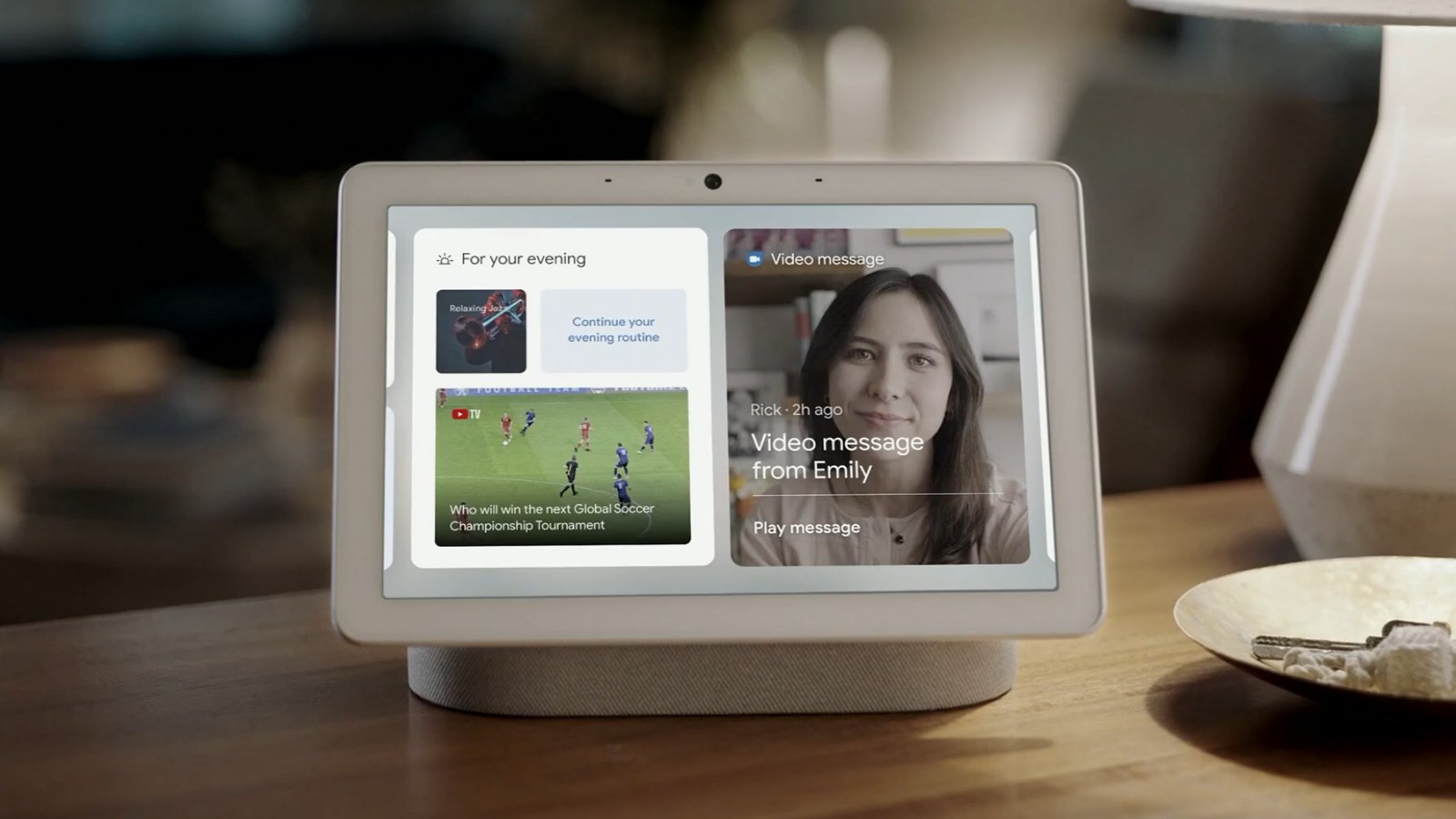The rumored Google Nest Hub 3 detachable tablet is the shake up smart displays need
I love smart speakers. My house is full of them. As well as the four (four! Count them!) Amazon Echo Alexa speakers I have permanently set up in my home (a regular Echo, an Echo Studio, a 10-inch Echo Show and, the newest addition, an Echo Show 15), I have a constant procession of smart speakers in and out of my set up for review purposes.
From Sonos speakers to the Apple HomePod, I’ve basically tried all the ones worth trying – and some cruddy ones too.
However, the smart speaker market feels a little stagnant right now. Amazon hasn’t put out a significant audio upgrade to its Echo line up since the Echo Studio, the Show 15 is an improvement over the standard Show line but not a generational leap, and the HomePod line (currently at least) is resigned to be a sideshow as the HomePod Mini does the heavy lifting for Apple’s in-the-home audio ambitions.
That’s why I’m particularly intrigued by a rumored update to the Google Nest Hub line up. According to the usual “sources in the know”, an upcoming Google Nest Hub 3 is making a dramatic – but sensible – change from the smart display norm.
A double whammy
According to sources speaking to 9to5Google, a third generation of the Google Nest Hub will see the smart display become a two-in-one convertible device.
Where standard smart displays are essentially static, connected screens, tethered to a plug socket and giving a visual interface to the smart speaker experience, the Nest Hub 3 would instead let a user detach the screen portion and take it around the home with them.
Beyond the broad concept, not much is yet known, or even ready to be whispered, about the Google Nest Hub 3. There’s no talk of screen sizes (the current Nest Hubs come in seven and 10-inch variants), nor whether the device would use full-fat Android or the Cast software that is at the heart of the Nest Hub 2.
Regardless, the sources are pointing to a 2022 reveal for the device and, though it’s relatively soon, Google I/O 2022 in mid-May would be the perfect stage for it to break cover.
Sensible flexibility
Either way, Google has been lining up a change like this for a few years. Back at IFA 2019, the company announced the Google Assistant Ambient mode, an underutilized feature that would see Android devices enter a stripped-back hands-free voice control mode when docked for charging. When undocked, the devices then spring to life with full-fat Android, as seen in the Lenovo Smart Tab M10.
Smaller similar changes have been made to existing Nest Hub devices too, with swipes revealing shortcuts to web-based games and applications that expand the functionality of the smart displays.

The proposed Nest Hub 3 seems like a sensible refinement and combination of these collected ideas over the years. When smart displays initially launched, many wondered why you wouldn’t just use a tablet for the same functionality – indeed, the mobile operating systems of tablets often had far deeper functionality than the leaner OSes of smart displays. But smart displays, at least those of larger sizes like the Nest Hub 2 and rotating Echo Show 10, would always beat a tablet in terms of audio capabilities.
And so a smart display that effectively doubled up as both portable tablet and smart speaker seems like the logical approach to smart displays that, arguably, should have been the first step the then-fledgling product category should have taken.
It’s a more efficient use of devices from both a green and financial perspective – why have both a speaker and a portable tablet when one device can do both? A docked tablet would always be charged and ready for on the go use (with wireless charging liberating compared to the finicky docking ports of speakers of yesteryear), but also be smart enough to handle any hands-free voice requests a dedicated smart speaker could. It could even have additional mics in its speaker base for improved voice recognition – not to mention the audio improvements an actual speaker cabinet could bring to the audio experience over a solo tablet’s built-in speakers.
For the cash strapped or space conscious, a 2-in-1 device like this could really maximize the utility of a living space – think a student’s dorm room, or the ability to have a kitchen speaker that doubles up as an ereader when disconnected and taken to bed. If Google could get the best of Assistant Ambient mode and full-fat Android working seamlessly alongside a speaker dock, it could be one of the hardest-working pieces of tech in a family’s gadget arsenal. And with Apple rumored to be considering something similar, this proposed device is a throwback to the days of the speaker docks of old.
For all the latest Technology News Click Here
For the latest news and updates, follow us on Google News.
